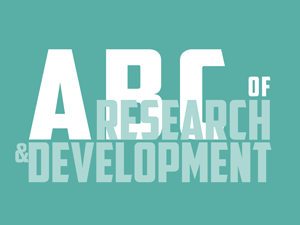
It must be set up with the partner from the very first interactions in order to be able to communicate without restraint on unprotected results, avenues of research or development. The absence of a confidentiality agreement prior to these exchanges represents a risk for the research or for the registration of an intellectual property title. Indeed, “innovation is in the air”, which means that the same research subject can be studied simultaneously by several public or private research teams around the world. Therefore, preliminary discussions on the subject of common interest must be identified as confidential information under a confidentiality agreement. If the exchanges do not lead to collaboration, the agreement would deter your interlocutor from using the information exchanged. In the absence of such an agreement, leakage of knowledge to the other party is a possibility, representing for the laboratory an annihilation of the efforts previously made.
The risk concerns intellectual property in particular. A number of intellectual property registrations, such as patents, require the condition of “novelty". According to Article L611-11 of the Intellectual Property Code, "an invention is considered new if it is not included in the state of the art. The state of the art consists of everything that has been made accessible to the public before the filing date of the patent application by means of a written or oral description, use or any other means". Disclosure of information that could be protected by a patent application would therefore be prejudicial to the criterion of novelty. However, the signing of a confidentiality agreement identifying the confidential information that is the subject of a future patent application may thwart disclosure by the partner. Indeed, Article L611-13 of the French intellectual property Code allows the applicant for a French patent application to be protected against the possible impact on the novelty of his invention in the event of a recent disclosure (in the six months preceding the filing date of the French patent application) or an earlier filing, which would result from abuse by a third party. The signature of a NDA would be evidence in case of infringement by the partner and the disclosure would then not be taken into account in the analysis of novelty. Furthermore, without this agreement, the interlocutor could also oppose the grant of the patent application on grounds of lack of novelty as a result of such past disclosure.
The exchange of confidential information must be in writing so as to prove this exchange has taken place. All written exchanges must be marked "Confidential Information" in order to identify and make it clear to your interlocutor that they are subject to the various confidentiality agreement obligations. If the communication is oral, it is necessary to make a written record (the "minutes") shared with your interlocutor identifying the information as of a confidential nature in order to subject it to the confidentiality obligations. Ideally, the representatives of the parties involved in the exchange should sign the minutes or at least validate them by e-mail.
Some partners are reluctant to systematically sign a confidentiality agreement before starting discussions. In such cases, it may be appropriate to start discussions without disclosing confidential information at first. Then, when it is necessary to exchange sensitive information, it is advisable to suspend these exchanges until a confidentiality agreement has been concluded. Communication will then be both freer and more constructive. Beware that if sensitive information is exchanged beforehand without an NDA and if a collaboration agreement containing confidentiality clauses is finally concluded, the initial exchanges are not covered. However, it is possible to retroactively settle the matter with a contract from the date of the first sensitive meeting. In this case, the confidential information exchanged is attached to the confidentiality agreement.
In practice, the confidentiality agreement is a contract by which the parties undertake to keep strictly confidential the identified sensitive information exchanged between them. The agreement can be multilateral if the confidential information is shared by several parties (e.g., bilateral) or unilateral if only one party discloses. The agreement defines the ownership of the information transmitted, what does and does not constitute confidential information, how it is transmitted, retained, returned and destroyed, the exceptions to information confidentiality, and the end of the confidentiality obligation. Specifically, the agreement includes two durations: on the one hand, the duration during which parties will exchange confidential information; this is generally quite short, from 2 to 12 months; on the other hand, the duration of the obligations to uphold confidentiality; this is generally from 5 to 10 years after the end of the agreement. It should be noted that a confidentiality agreement should not contain clauses relating to the transfer of material. This transfer must be the subject of a specific contract called a "material transfer agreement".
This article was written by Johnny Sanz, Isabelle Chéry and Gaëlle Calvary



